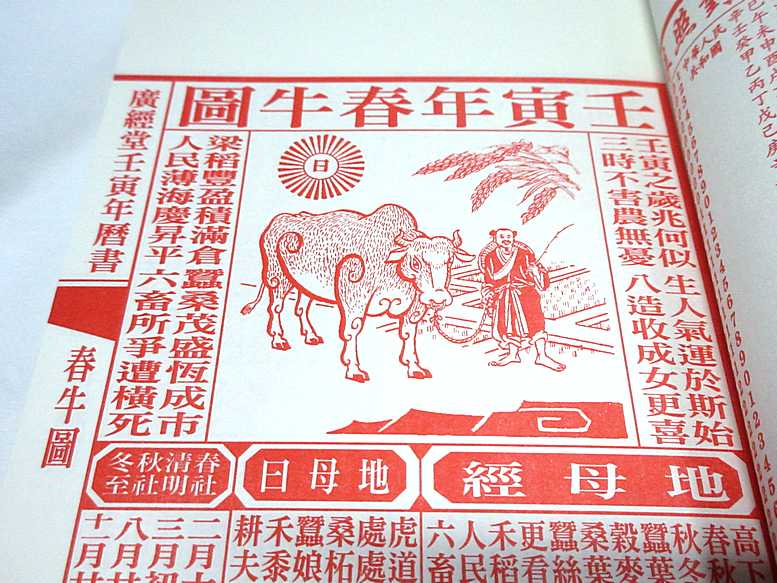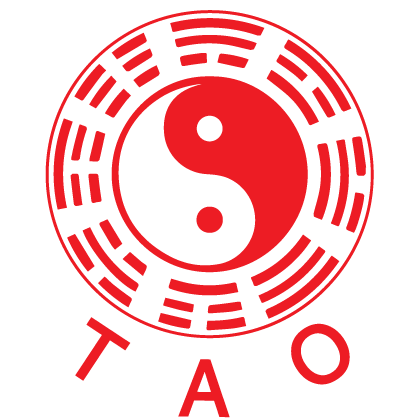
In Tung Shing, there is a Spring Ox Diagram featured in the beginning section. It is used to predict the weather for the upcoming lunar year and serves as guidance for farmers, based on Chinese traditional culture. By interpreting this information, farmers can gain an overall understanding of the seasonal outlook and prepare accordingly for agricultural activities.
The Spring Ox Diagram mainly consists of a spring ox and a cowherd.
The Spring Ox
The spring ox stands 4 feet tall, symbolizing the four seasons of the year. Its length is 8 feet, representing the eight major solar terms in traditional Chinese agriculture: Vernal Equinox, Summer Solstice, Autumnal Equinox, Winter Solstice, Spring Commences, Summer Commences, Autumn Commences, and Winter Commences. The ox’s tail is 1 foot and 2 inches long, symbolizing the 12 months of the year.
The Cowherd
The cowherd stands 3 feet and 6 inches tall, symbolizing the 360 days in a lunar year. He holds a whip measuring 2 feet and 4 inches, representing the 24 solar terms throughout the year.
Symbolic Interpretations in the Spring Ox Diagram
| Phenomenon | Meaning |
|---|---|
| The cowherd rolls up his trouser legs and is barefoot | The year will have abundant rainfall |
| The cowherd’s feet are fully covered with shoes | The year will be dry with little rain |
| The cowherd wears only one shoe | The year will have a moderate amount of rainfall |
| The cowherd wears a hat | The year will be relatively cool |
| The cowherd is without a hat | The year will be generally hot |
| The cowherd stands beside the ox’s head | Spring Commences is 5 days before Lunar New Year |
| The cowherd stands beside the ox’s body | Spring Commences falls between 5 days before and 5 days after Lunar New Year |
| The cowherd stands beside the ox’s hindquarters | Spring Commences is 5 days after Lunar New Year |
On each side of the Spring Ox Diagram are two sets of poetic verses, each written in seven-character lines. These verses are believed to forecast the weather and agricultural conditions for the corresponding lunar year.
If you need a copy of Tung Shing, you may purchase it at our store.
在《通勝》的開篇部分,有一幅春牛圖,用以預測即將到來的農曆新年天氣,並依據中國傳統文化,作為農民耕作的指引。透過解讀春牛圖的象徵,農民可大致了解全年季節變化,並提前做好農事準備。
春牛圖主要由春牛和牧童兩個角色組成。
春牛
春牛高四尺,象徵一年四季。牛身長八尺,代表中國農業中八個重要的節氣:春分、夏至、秋分、冬至、立春、立夏、立秋、立冬。牛尾長一尺二寸,象徵一年十二個月份。
牧童
牧童高三尺六寸,象徵農曆年的三百六十天。他手持一根長二尺四寸的鞭子,代表一年中的二十四節氣。
春牛圖象徵解讀
| 現象 | 意義 |
|---|---|
| 牧童捲起褲管並赤腳 | 全年雨量豐沛 |
| 牧童雙足穿鞋 | 全年乾旱少雨 |
| 牧童只穿一隻鞋 | 雨量適中 |
| 牧童戴帽 | 氣候偏涼 |
| 牧童不戴帽 | 氣候偏熱 |
| 牧童站在牛頭旁 | 立春早於農曆新年五日 |
| 牧童站在牛身旁 | 立春在新年前後五日之間 |
| 牧童站在牛尾旁 | 立春遲於農曆新年五日 |
春牛圖左右各有一組七言詩句,共兩套,用以預測當年農曆年的天氣狀況及農事吉凶。
如需購買《通勝》可於本店選購。
